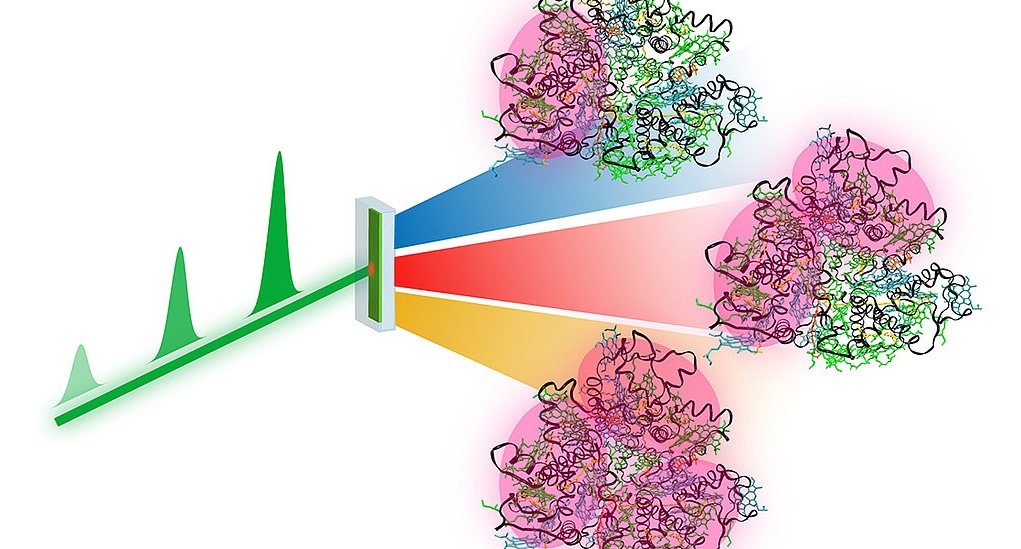The construction of the first laser in commercial applications with light has turned out to be an integral part of humans’ daily lives. This development set the stage for the scientific field of laser spectroscopy. It is a method that is known to be central to the analysis of materials and the study of basic physical phenomena.

In the new method, laser pulses of different power (green) are combined in such a way that single excitation (blue), double excitation (red), and triple excitation (yellow) can be distinguished, for example, in biological light-harvesting complexes. Image Credit: Julian Lüttig / Universität Würzburg.
But despite all the successes, the research group has still faced struggles since the 1970s. The difficulty is with the issue that a laser shining on a sample could excite it not only for a single time but also numerous times for every experiment.
In such a case, the measurement outcomes of the single excitation and the several excitations tend to overlap and generally cannot be isolated, thereby making it hard to understand the material.
For this to be rectified, the laser power has been generally decreased to such an extent that several excitations are less probable compared to single excitations. But, they cannot be avoided fully and can thus result in an incorrect interpretation of the data.
Also, at a time when several excitations are themselves known to be the subject of investigation, it is still hard to differentiate between two, three, four, or even more excitations.
A Complex Problem with a Simple Solution
Currently, a group of physicists and physical chemists from the Julius-Maximilians-Universität Würzburg (JMU) and the University of Ottawa (Canada) has resolved this decades-old issue.
They have presented their technique in the current issue of the Nature journal. In the experiment performed by the group of Würzburg professor Tobias Brixner, the scientists made use of the common method of so-called “transient absorption” to track highly rapid changes in several materials that take place in a millionth of a second.
While the standard method makes use of a single laser power, numerous different powers were used by the scientists and integrated the data as per a newly derived formula. By adopting this method, they were able to systematically isolate the effects from single to six-fold excitation.
Not so long ago, I wouldn't have thought that such a distinction was even possible especially with such a simple procedure that any spectroscopic research group can implement and use without much additional effort.
Tobias Brixner, Professor, Julius-Maximilians-Universität Würzburg
But deriving the so-called “recipe” was anything but easy and needed careful analysis.
The interaction of light and matter is so rich, and we’ve demonstrated a beautiful structure hiding inside it. The fact that this method works for virtually any sample you want to study really surprised all of us.
Jacob Krich, Theorist and collaborator Professor, University of Ottawa
Applications from Photosynthesis to Materials Science
The newly developed method consisted of an extensive range of possible applications.
Separation of signals from single and multiple excitations is particularly useful for large systems with densely packed light absorbers, such as natural photosynthetic complexes or organic materials.
Pavel Malý, Post Doctoral Fellow, Julius-Maximilians-Universität Würzburg
In the forthcoming days, the authors have planned to extend the technique to clarify, for instance, energy transport happening in novel photovoltaic materials.
Journal Reference
Malý, P., et al. (2023) Separating single- from multi-particle dynamics in nonlinear spectroscopy. Nature. https://doi.org/10.1038/s41586-023-05846-7.